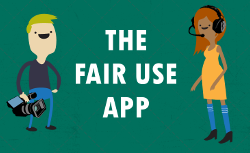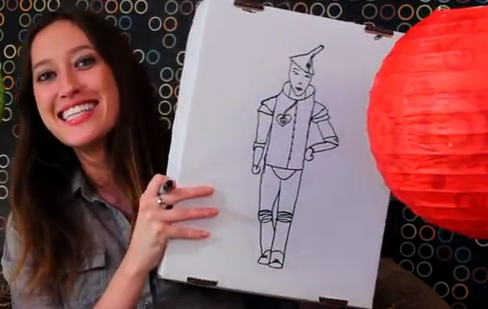New Media Rights files comments in FCC Future of Media proceeding
Submitted by New Media Rights last modified Wed, 03/09/2011 - 3:33pm
May 10, 2010
FOR IMMEDIATE RELEASE
Contact: Art Neill, Executive Director, New Media Rights, (619) 591-8870
New Media Rights Files Comments in FCC's Future of Media Proceeding
San Diego, California- On Friday May 7th, 2010 New Media Rights submitted comments in the FCC's Future of Media proceeding. New Media Rights' comments to the Commission draw directly on our experience providing one-to-one pro bono legal assistance as well as a free public media studio to creators of all types. Our work has given us the opportunity to engage with a wide variety of media makers, advocates and citizens. These comments are also intended to supplement a conversation held between New Media Rights, Free Press, Main Street Project, People's Production House, The Transmission Project and Mountain Area Information Network with the FCC's Steve Waldman on Thursday May 6th, 2010.
Our comments to the Commission include these topics:
1. Rebuilding of the San Diego and national media landscape to encourage participatory, citizen involved media that helps local communities identify and meet local challenges
2. Potential legal reforms and legislative abstention that can effect the media landscape
3. The role of the link economy and information middlemen, which are critical to future of finding and filtering through news and information
4. Government data availability and usage of public media
5. What types of Journalism are most in Jeopardy?
6. The role of Public vs. commercial media, and the possibilities of government subsidies
7. Should there be changes to Public Broadcasting Act? Are there examples from other countries to consider?
8. The future of public access channels (PEGs).
9. How foundations are supporting local news and journalism
10. User generated Journalism
11. Ensuring a free and open internet as well as universal broadband access
12. The role of mobile devices, their effect on the flow of communication, culture, and speech, and how they differ from previous information distribution media
Here are some excerpts:
Rebuilding of the San Diego and national media landscape to encourage participatory citizen involved media that helps local communities identify and meet local challenges
Particularly missing from our media landscape is investigative and analysis journalism regarding local issues.
Positive signs do exist, however. There are many individuals, community and nonprofits trying to address the gap in news and information, and reinvent media in San Diego
Some of these, such as VoiceofSanDiego.org, have received significant attention, but many other experiments are taking place in San Diego. These include:
- Liberty One radio who is working on bringing another voice to radio in San Diego,
- East County Magazine which is a startup that gets significant traffic and provides basic news and info to East county in an entirely Internet based format,
- Organizations like the New Media Rights, our local public libraries, and the SD Media Arts Center who play a role in local media through digital storytelling and training
Potential legal reforms and legislative abstention that can effect the media landscape
Never has the overlap between copyright law and our society's ability to communicate been so clear.
As is clear from a cursory visit to social media websites, the fair use doctrine is implicated daily in citizen media, yet it is a notoriously nebulous doctrine. Many of the creators we meet are speaking back and commenting on their culture and society in one way or another. We support proposals such as that of Public Knowledge and others regarding fair use reform, including any proposals that acknowledge and account for fair use as it exists today. Particularly, we support efforts to protect:
- incidental uses of content
- non-consumptive uses of content, which have been defined as uses that “do not directly trade on the underlying creative and expressive purpose of the work being used."
- personal, noncommercial uses of content
We also encourage Congress to provide stronger punishment for frivolous complaints and bullying on the internet that result in content and speech being taken down. We have assisted creators and new media outlets that have been the victims of repeated frivolous abuses of the DMCA takedown procedures. Service providers typically
Government data availability and usage of public media
The ease of access to government data is critical. Government agencies should strive to make data available in easily accessible, open formats so that citizens, businesses, and non-profits can then repurpose it to the benefit of the public. As discussed, public use of basic facts and information is critical to development of vibrant and diverse voices, and governments are only scratching the surface of the possibilities.
The positive externalities of making data accessible and easy for citizens to reuse are tremendous. A few positive examples of Government entities making their data accessible enough to enable innovative uses in new media include:
- The Library of Congress and numerous public libraries and universities, which have made many photos in their archives available through flickr (http://www.flickr.com/commons/)
- Social media websites such as www.OpenCongress.org that are built around accessible legislative information.
The role of mobile devices, and how they differ from previous information distribution media
The Commission should take steps to ensure that consumers have equal access to information through whatever means consumers choose to connect. The easiest way would be to ensure mobile devices maintain open connections to the internet for individuals to receive news and information through whatever information source they choose. A more complicated route could involve setting a standard for app development, allowing apps to work across various mobile operating systems, or placing restrictions on unreasonable app blocking. The Commission in considering how to approach regulating the industries involved needs to consider the relationship between the content creators and the access providers and the extent to which access providers are also content creators. As the number of consumers accessing news and information through mobile devices continues to increase, the Commission must be prepared to ensure that the industries involved do not unfairly restrict access. This proceeding can at least be a starting point for the Commission to review the state of the mobile devices and their affect on the flow of news, information, culture, and speech.
The full comments are downloadable here and on Scribd
###
Other group and organizations Future of Media Comments:
20 Media Action Grassroots Network (MAG-Net) Organizations comments
National Hispanic Media Coalition comments
National Federation of Community Broadcasters
| Attachment | Size |
|---|---|
| 107.03 KB |




